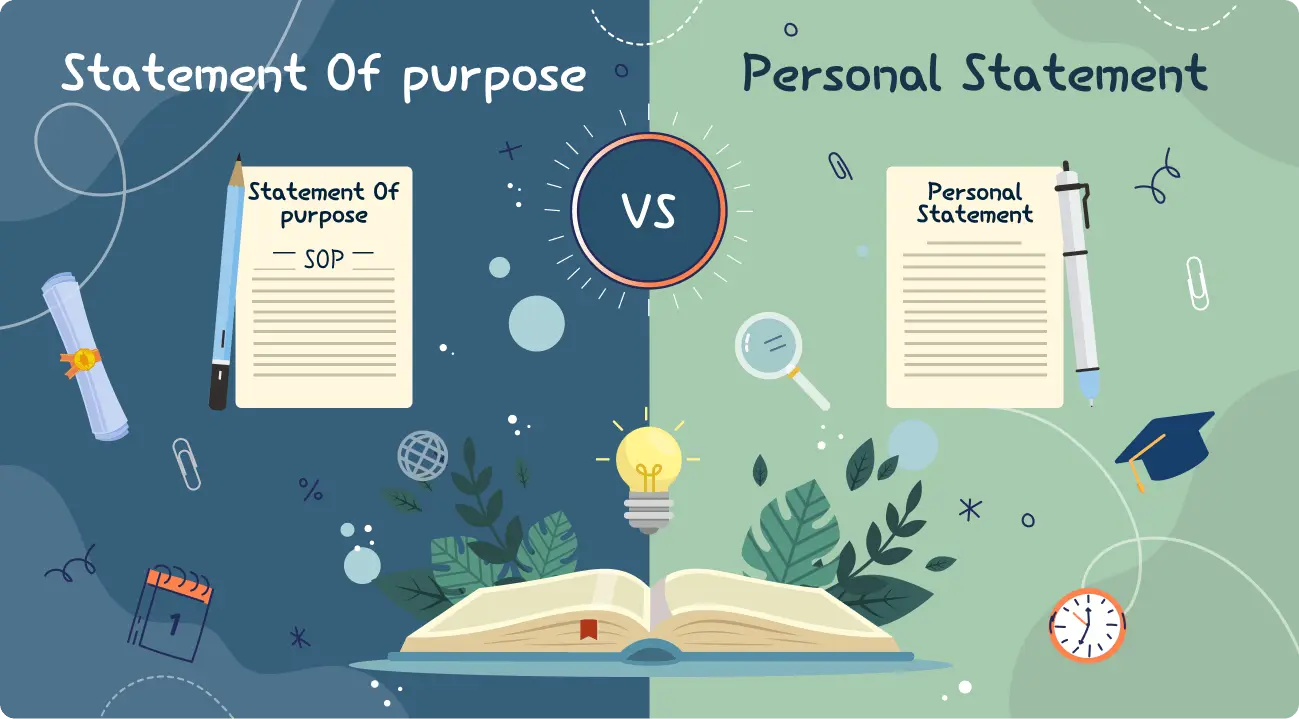SOP vs. Personal Statement: Key Differences and When to Use Each
By - Admin | July 16, 2024

When it comes to applying for academic programs, scholarships, or fellowships, you may be asked to submit a Statement of Purpose (SOP) or a Personal Statement. While both documents serve to provide insights into your background and aspirations, they have distinct purposes and focus areas. Understanding these differences is crucial for crafting an application that stands out.
Crafting the Right Document: Knowing When to Use an SOP vs. a Personal Statement
Imagine applying to multiple programs, each with its unique requirements. Sarah, who applied to both research-focused and professional programs, quickly learned the importance of tailoring her application materials. She initially wrote a personal statement for all her applications, but after receiving feedback, she realized that some programs required a more structured approach—an SOP. By understanding the specific needs of each application, Sarah was able to refine her documents, ensuring her SOP highlighted her academic goals, while her personal statement showcased her individual journey. The result? Multiple offers from top-tier universities.
Statement of Purpose (SOP)
Purpose:
The SOP is a formal essay primarily focused on your academic and professional goals. It’s designed to showcase your fit with a specific program or institution by highlighting your academic background, research interests, and career aspirations.
Content:
- Academic Background: Discuss your educational achievements and relevant coursework.
- Research Interests: Outline specific areas you want to explore within the program.
- Career Aspirations: Explain your short-term and long-term career goals.
- Program Fit: Demonstrate why this program is the right choice for your academic and professional development.
Audience:
The SOP is primarily targeted at the admissions committees of academic programs, such as graduate schools, medical schools, or law schools. It’s your opportunity to show how you align with the program’s objectives and how you can contribute to its academic community.
Personal Statement
Purpose:
A Personal Statement is more versatile and allows you to express your personal growth, values, and life experiences. It’s an opportunity to share your personal journey and provide context for your academic and career choices.
Content:
- Personal Growth: Reflect on challenges you’ve overcome and how they’ve shaped you.
- Life-Changing Experiences: Share significant experiences that have influenced your path.
- Unique Perspectives: Highlight your personal values and how they guide your decisions.
- Program Fit: Explain why the program aligns with your personal and academic goals.
Audience:
The Personal Statement can be used for various applications, including college admissions, scholarships, and fellowships. It’s your chance to showcase your unique qualities, experiences, and perspectives to a broader audience.
When to Use Each
SOP:
Use an SOP when applying to academic programs like graduate schools, medical schools, or law schools. The focus should be on your academic and professional trajectory, demonstrating your knowledge of the program and your ability to contribute to its community.
Personal Statement:
Use a Personal Statement when applying for scholarships, fellowships, or undergraduate admissions. This is your opportunity to highlight your personal journey, the challenges you’ve faced, and the unique perspectives you bring.
Key Differences
Instead of simply stating your qualities, use anecdotes and experiences to showcase them. For example, rather than saying “I’m a strong leader,” describe a situation where you led a team to overcome a challenge. This approach makes your SOP more engaging and credible.
Key Differences
| Feature | SOP | Personal Statement |
|---|---|---|
| Focus | Academic and professional goals | Personal growth and experiences |
| Content | Academic background, research interests, career aspirations | Personal challenges, life-changing experiences, unique perspectives |
| Audience | Admissions committees of academic programs | Various applications, including scholarships, fellowships, and undergraduate admissions |
4. Connect the Dots
Clearly explain how your past experiences, academic achievements, and personal qualities make you a strong candidate for the program. Make sure there’s a logical flow that connects your background with your future goals.
5. Be Yourself
Authenticity is key. Don’t try to be someone you’re not. Let your personality shine through in your writing. Adcoms appreciate applicants who are genuine and self-aware.
Start creating your personalized Statement of Purpose now
Create Your SOP TodayConclusion
Both the SOP and Personal Statement are powerful tools in your application arsenal. By understanding their distinct purposes and content, you can tailor your writing to effectively showcase your qualifications and achieve your academic and professional goals. Whether you’re focusing on your academic journey or sharing your personal growth, knowing when and how to use each document will significantly enhance your chances of success.



















 Mobile number is verified
Mobile number is verified


Leave a Comment
Your email address will not be published. Required fields are marked